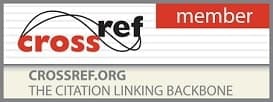- Printed Journal
- Indexed Journal
- Refereed Journal
- Peer Reviewed Journal
P-ISSN: 2394-1685 | E-ISSN: 2394-1693 | CODEN: IJPEJB
Impact Factor (RJIF): 5.38
2016, Vol. 3, Issue 5, Part B
A study of variations in an athlete’s reaction time performance based on the types of stimulus
Author(s): Neha Chavan and Dr. Deepak Shendkar
Abstract:
The purpose of this study was to investigate the difference in the reaction time responses of an athlete based on various types of stimuli. Reaction time is duration between applications of a stimulus to onset of response. The present study was measured reaction time in 197 athletes, for the comparison in groups which were into 3 categories 1. Gender wise (Female and Male), 2. Game wise (Individual and Team), 3. Standard wise (5th, 6th, 7th, 8th, 9th, 10th) and correlation was done between the group based on the 3 tests. The VRT, SRT and ViRT was measured by the Jerry (Version: 0.6.4) software. During the reaction time testing visual, sound and tactile stimuli were given for five times and average reaction time after omitting highest and lowest reaction time, was taken as the final reaction time. Results suggest that a comparison was done between the performance of male and female athletes and no significant difference was seen in their performance in all the three test. Similarly a comparison was also done based on athletes playing a team and individual game and a significant difference was seen in all the three test (VRT: F = 11.538, p = 0.001); (SRT: F = 8.546, p = 0.004); (ViRT: F = 27.240, p = 0.001). Further a comparison was also done based on the standard in which the athletes study and it was seen that there is significant difference in two of test (VRT: F = 4.287, p = 0.001); (ViRT: F = 5.434, p = 0.001). Co-relational analysis was also done based on gender, and a significant negative correlation was found in females VRT and SRT (r = -.285, p = .001) and the males showed a significantly positive correlation in VRT and ViRT (r = .243, p = .001) and a significant negative correlation in SRT and ViRT (r = -.353, p = .001). Further, the correlation done based on individual and team game. A significant negative correlation was found in individual game athletes VRT and SRT (r = -.532, p = .001) and a positive correlation between SRT and ViRT (r = .104, p = .001). The team game athletes showed a significant negative correlation in SRT and ViRT (r = -.462, p = .001). The correlation was done based on standards athletes. It was seen that in 5th standard a significant negative correlation was found between SRT and ViRT (r = -.764, p = .001), in 6th standard a significant negative correlation was found in VRT and SRT (r = -.554, p = .001), in 7th standard a significant negative correlation was found between VRS and SRS (r = -.396, p = .001), and SRT and ViRT (r = -.381, p = .001). There was no correlation found in 8th standard. In 9th standard a significant negative correlation was found in SRT and ViRT (r = -.446, p = .001). In 10th standard a significant negative correlation was found in VRT and SRT (r = -.554, p = .001).
Pages: 79-83 | 1609 Views 255 Downloads
Download Full Article: Click Here

How to cite this article:
Neha Chavan, Dr. Deepak Shendkar. A study of variations in an athlete’s reaction time performance based on the types of stimulus. Int J Phys Educ Sports Health 2016;3(5):79-83.








 Research Journals
Research Journals